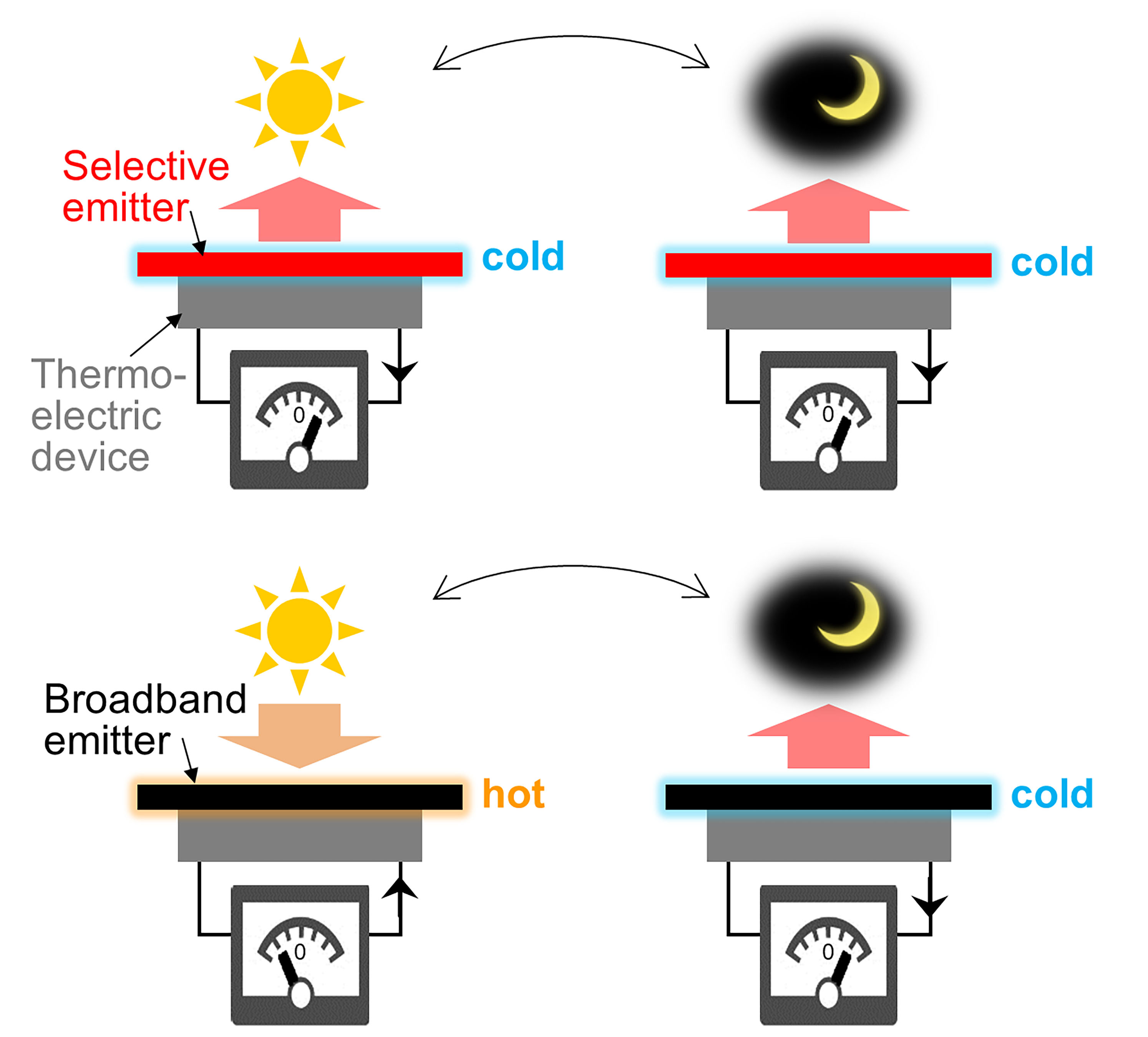Scientists from the National University of Singapore have developed innovative aerogels for radiative cooling and electromagnetic waves absorption. Using plastic waste, the team engineered thin-film aerogels that function as thermal insulators and radiative coolers. These aerogels can be applied to the roofs of buildings to reduce indoor temperatures.
Tag: radiative cooling

Cooling Mechanism Increases Solar Energy Harvesting for Self-Powered Outdoor Sensors
Thermoelectric devices, which use the temperature difference between the top and bottom of the device to generate power, offer some promise for harnessing naturally occurring energy. In Applied Physics Letters, authors tested a device made up of a wavelength-selective emitter that constantly cools the device during the day using radiative cooling. As a result, the top of the device is cooler than the bottom, causing a temperature difference that creates constant voltage through day and night and various weather conditions.